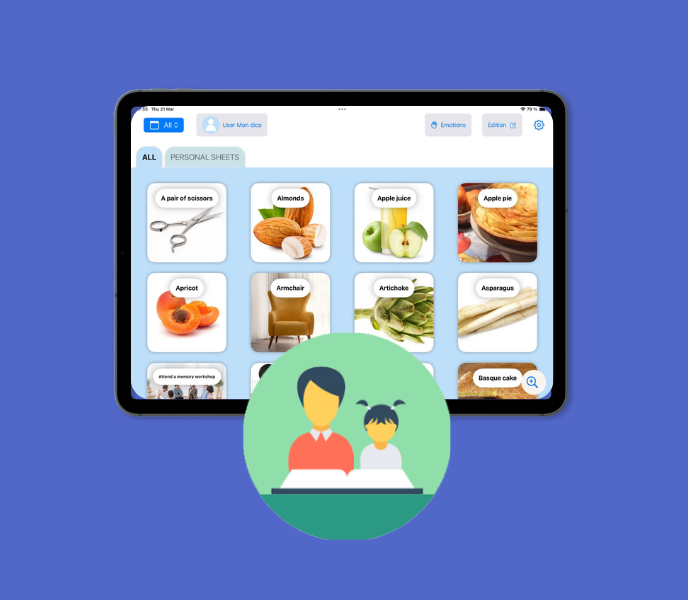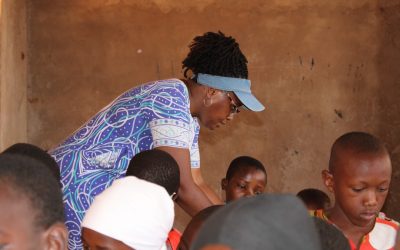Communication is a fundamental aspect of human interaction and plays a crucial role in our daily lives. For individuals with disabilities, communication can present unique challenges that can impact their quality of life. These challenges can include difficulties with speech and language, social interactions, and education. The benefits of sequencing systems are sometimes underrated, but with the help of sequencing systems, individuals with disabilities can enhance their communication skills, increase their independence, and improve their overall quality of life.
People with disabilities face various communication challenges that can hinder their ability to express themselves effectively. These challenges can include difficulties with speech production, language comprehension, and social interactions.
For example, individuals with speech impairments may struggle to articulate their thoughts and ideas verbally, while those with language disorders may have difficulty understanding and using words and sentences appropriately. Additionally, individuals with disabilities may face barriers in social interactions, making it challenging for them to form relationships and engage in meaningful conversations.
The impact of communication on the quality of life for individuals with disabilities cannot be overstated. Effective communication is essential for expressing needs and desires, building relationships, participating in social activities, and accessing education and employment opportunities.
When individuals with disabilities are unable to communicate effectively, they may experience frustration, isolation, and a decreased sense of self-worth. Therefore, finding ways to enhance communication skills is crucial for improving the overall well-being and quality of life for people with disabilities.
What is Sequencing and How Does it Work?
Sequencing refers to the process of organizing information or actions in a specific order or sequence. In the context of communication for people with disabilities, sequencing systems are tools or strategies that help individuals organize their thoughts, ideas, or actions in a structured manner. These systems can be visual or auditory and can range from simple to complex depending on the individual’s needs.
There are various types of sequencing systems that can be used to support communication for people with disabilities. Visual sequencing systems often involve the use of pictures, symbols, or written words to represent different elements of communication. These visual supports can be arranged in a linear or hierarchical format to help individuals understand and express information in a step-by-step manner.
Auditory sequencing systems, on the other hand, may involve the use of recorded messages or prompts that guide individuals through a series of actions or tasks.
Sequencing systems work by providing individuals with a structured framework for organizing their thoughts, ideas, or actions. By breaking down complex tasks or concepts into smaller, more manageable steps, sequencing systems help individuals with disabilities navigate the communication process more effectively.
So these systems can provide visual or auditory cues that guide individuals through each step, ensuring that they are able to communicate their thoughts and ideas in a clear and organized manner.
Benefits of Sequencing Systems for People with Disabilities: Enhancing Communication and Independence
Sequencing systems offer numerous benefits for people with disabilities, particularly in terms of enhancing communication skills, increasing independence, and enhancing decision-making abilities.
- Improved communication skills: Sequencing systems provide individuals with disabilities with a structured framework for organizing their thoughts and ideas. By breaking down complex information into smaller, more manageable steps, these systems help individuals communicate their thoughts and ideas more effectively.
For example, a visual sequencing system may help an individual with a speech impairment articulate their needs by providing them with a series of pictures or symbols that represent different words or phrases. Similarly, an auditory sequencing system may guide an individual with a language disorder through a series of recorded prompts that help them construct sentences or engage in conversations.

- Increased independence: Sequencing systems empower individuals with disabilities to communicate independently and express themselves without relying on others for support. By providing individuals with a structured framework for organizing their thoughts and ideas, these systems enable them to navigate the communication process more effectively on their own. This increased independence can have a significant impact on an individual’s self-esteem and overall quality of life, as it allows them to have greater control over their own communication and express themselves more freely.
Enhanced decision-making abilities: Sequencing systems can also help individuals with disabilities make decisions more effectively. By breaking down complex tasks or concepts into smaller, more manageable steps, these systems enable individuals to analyze information and make informed choices. For example, a visual sequencing system may help an individual with a cognitive impairment understand the steps involved in completing a task or making a decision, allowing them to approach the process in a more systematic and organized manner.
How Sequencing Systems Can Help with Speech and Language Development?
Sequencing plays a crucial role in speech and language development for individuals with disabilities. By breaking down the process of speech production and language comprehension into smaller, more manageable steps, sequencing systems can help individuals develop their communication skills more effectively.
- In terms of speech development, sequencing systems can help individuals with speech impairments articulate their thoughts and ideas more clearly. For example, a visual sequencing system may provide individuals with a series of pictures or symbols that represent different sounds or words. By following the sequence of these visual supports, individuals can practice the correct articulation of specific sounds or words, improving their speech production skills over time.
- In terms of language development, sequencing systems can help individuals with language disorders understand and use words and sentences appropriately.
- For example, a visual sequencing system may provide individuals with a series of pictures or symbols that represent different words or phrases. By following the sequence of these visual supports, individuals can learn how to construct sentences or engage in conversations in a more structured and organized manner.
Sequencing activities for speech and language development can include tasks such as matching pictures to words, arranging pictures in the correct order to form sentences, or following a series of prompts to practice specific speech sounds. These activities provide individuals with opportunities to practice their communication skills in a structured and systematic manner, helping them develop their speech and language abilities over time.
Using Sequencing Systems to Improve Social Skills and Interactions
Social skills are essential for individuals with disabilities to form relationships, engage in meaningful conversations, and participate in social activities. However, individuals with disabilities may face challenges in developing and using these skills effectively. Sequencing systems can play a crucial role in improving social skills and interactions for people with disabilities.
Sequencing systems can help individuals with disabilities understand the steps involved in social interactions and provide them with a structured framework for engaging in conversations.
A visual sequencing system may provide individuals with a series of pictures or symbols that represent different social cues or conversation starters for example. By following the sequence of these visual supports, individuals can learn how to initiate conversations, take turns, and respond appropriately to others.
Sequencing activities for social skills development can include tasks such as role-playing different social scenarios, practicing conversation starters and responses, or following a series of prompts to engage in specific social interactions. These activities provide individuals with opportunities to practice their social skills in a structured and systematic manner, helping them develop their ability to interact with others more effectively.
Sequencing as a Tool for Education and Learning

Sequencing systems can also be valuable tools for education and learning for individuals with disabilities. By breaking down complex concepts or tasks into smaller, more manageable steps, sequencing systems can help individuals understand and process information more effectively.
They can be used to support various educational activities, such as reading comprehension, math problem-solving, or following instructions. For example, a visual sequencing system may provide individuals with a series of pictures or symbols that represent different steps involved in solving a math problem. By following the sequence of these visual supports, individuals can understand the process of problem-solving more clearly and apply it to other similar tasks.
Sequencing activities for education and learning can include tasks such as sequencing events in a story, arranging pictures in the correct order to solve a problem, or following a series of prompts to complete a task. These activities provide individuals with opportunities to practice their cognitive skills in a structured and systematic manner, helping them develop their ability to learn and process information more effectively.
Sequencing Systems and Assistive Technology: Making Communication Easier and More Accessible
Assistive technology plays a crucial role in supporting individuals with disabilities in their communication efforts. Sequencing systems can be integrated with assistive technology to make communication easier and more accessible for people with disabilities.
Assistive technology devices such as communication boards, speech-generating devices, or tablet applications can incorporate sequencing systems to provide individuals with visual or auditory supports for communication, for example, My Dico: Communication and Autonomy is an app developed for people with special needs and who needs routines and to do sequencing. These devices can be customized to meet the specific needs of individuals with disabilities, allowing them to access and use sequencing systems in a way that is most effective for them.
For example, a communication board with visual sequencing supports may include pictures or symbols that represent different words or phrases. By selecting the appropriate pictures or symbols in a specific order, individuals can communicate their thoughts and ideas more effectively. Similarly, a speech-generating device with auditory sequencing supports may provide individuals with recorded prompts that guide them through a series of actions or tasks.
By integrating sequencing systems with assistive technology, individuals with disabilities can have access to communication tools that are tailored to their specific needs. This integration can make communication easier and more accessible for people with disabilities, allowing them to express themselves more effectively and participate more fully in their communities.
Choosing the Right Sequencing System: Factors to Consider
When choosing a sequencing system for individuals with disabilities, several factors should be considered to ensure that the system meets their specific needs and preferences.
Firstly, it’s essential to consider the individual’s communication abilities and goals. Different sequencing systems may be more suitable for individuals with different levels of communication skills. For example, individuals who are nonverbal may benefit from visual sequencing systems that provide them with pictures or symbols to represent different words or phrases. On the other hand, individuals who have some verbal abilities may benefit from auditory sequencing systems that provide them with recorded prompts to guide their communication.
Secondly, it’s crucial to consider the individual’s preferences and learning style. Some individuals may prefer visual supports, while others may prefer auditory cues. It is essential to choose a sequencing that aligns with the individual’s preferences and learning style to ensure that they are comfortable and motivated to use the system.
Then, it’s very important to consider the complexity of the sequencing system. Some individuals may benefit from simple sequencing systems that involve a few steps, while others may require more complex systems that involve multiple steps or levels. It’s crucial to choose a sequencing system that matches the individual’s cognitive abilities and allows them to progress at their own pace.
Lastly, you have to consider the portability and accessibility of the sequencing system. Individuals with disabilities may need to use the sequencing system in various settings, such as at home, school, or in the community. It is important to choose a system that is portable and can be easily accessed and used in different environments.
Examples of sequencing systems include visual schedules, communication boards, speech-generating devices, tablet applications, or computer software programs. Each of these systems has its own features and benefits, and it is important to choose the one that best meets the individual’s needs and preferences.
Tips for Implementing Sequencing in Daily Life: Strategies for Success
Implementing sequencing systems in daily life can be a valuable tool for individuals with disabilities to enhance their communication skills and improve their overall quality of life. Here are some strategies for successful implementation of sequencing in daily life:
1. Start with simple tasks: Begin by introducing sequencing systems in simple tasks or activities that are familiar to the individual. This can help them understand the concept of sequencing and build their confidence in using the system.
2. Provide clear instructions: When introducing a sequencing system, provide clear and concise instructions on how to use it. Break down the steps involved in using the system and provide examples or demonstrations to help the individual understand.
3. Practice regularly: Encourage regular practice with the sequencing system to help the individual become more familiar and comfortable with using it. Set aside dedicated time for practicing sequencing activities and provide positive reinforcement and feedback to motivate the individual.
4. Individualize the system: Customize the sequencing system to meet the individual’s specific needs and preferences. This can include using pictures or symbols that are meaningful to the individual, adjusting the complexity of the system, or incorporating the individual’s interests or hobbies into the activities.
5. Involve others: Engage family members, caregivers, or educators in supporting the individual’s use of sequencing systems. Provide them with training and resources on how to use and reinforce the system, and encourage collaboration and communication between all parties involved.
6. Generalize skills: Help the individual generalize their sequencing skills to different settings and contexts. Encourage them to use the sequencing in various activities to ensure that they apply their skills in real-life situations.
7. Monitor progress: Regularly assess and monitor the individual’s progress with using the sequencing system. Adjust the system as needed based on their evolving needs and abilities, and provide additional support.
By implementing these strategies, individuals with disabilities can successfully incorporate sequencing systems into their daily lives, enhancing their communication skills and improving their overall quality of life.
Embracing the Power of Sequencing for Better Communication and Quality of Life
Sequencing systems offer a powerful tool for individuals with disabilities to enhance their communication skills, increase their independence, and improve their overall quality of life. By providing a structured framework for organizing thoughts, ideas, or actions, sequencing systems enable individuals to navigate the communication process more effectively and express themselves more clearly.
Sequencing systems can support speech and language development, improve social skills and interactions, enhance education and learning, and make communication easier and more accessible through the integration of assistive technology. By choosing the right sequencing system and implementing it successfully in daily life, individuals with disabilities can embrace the power of sequencing to enhance their communication and improve their overall quality of life.
It is important for individuals with disabilities, their families, caregivers, educators, and communities to recognize the importance of sequencing and its potential impact on communication and quality of life. By embracing sequencing as a tool for better communication and quality of life, we can create a more inclusive society that values and supports the unique needs and abilities of all individuals.
MY DICO
My Dico is an developed by Dynseo that includes various features. The app, available on IOS devices is adapted for people with special needs like non-verbal individuals. The user will have access to a visual Dictionary to express its thoughts and needs, an Emotions window and a Routines window with sequencing and games to learn them. My Dico has been created in order to be the daily live’s communication and autonomy assistant for people with linked impairments.

Other articles that might interest you:
How Parents Can Contribute to Teacher Training
As we delve into the realm of education, it becomes increasingly clear that teacher training is not merely a...
Differentiated Instruction Approaches: Training and Practical Application
Differentiated instruction is a pedagogical approach that recognizes the diverse needs of students in a classroom. It...
Key Skills Teachers Need to Support Students with Special Needs
As we embark on our journey to support children with special needs, it is essential for us to cultivate a deep...







